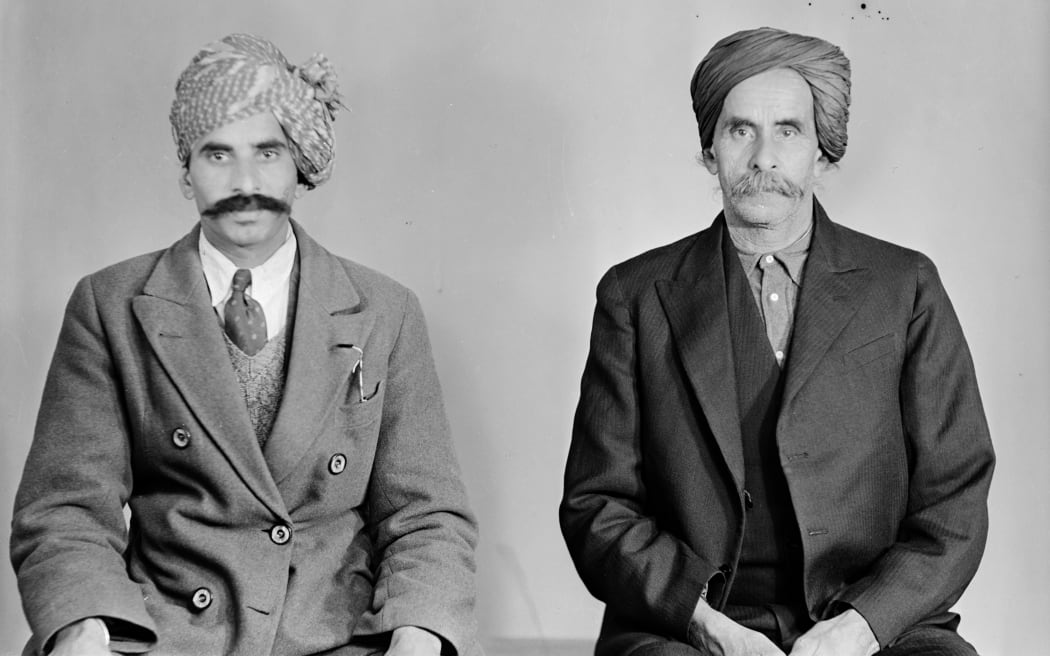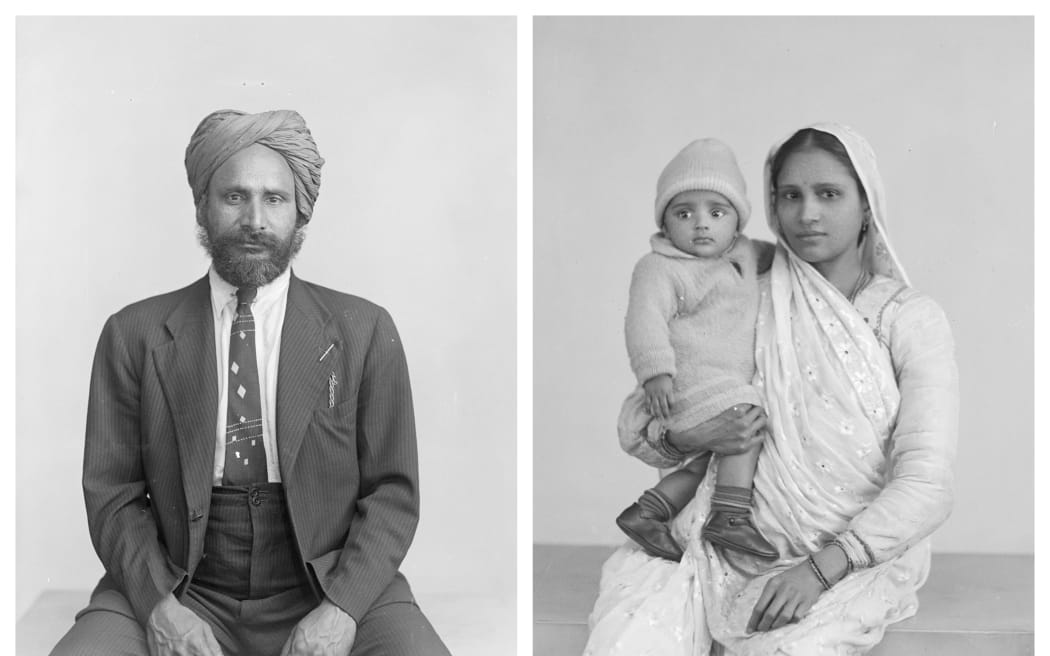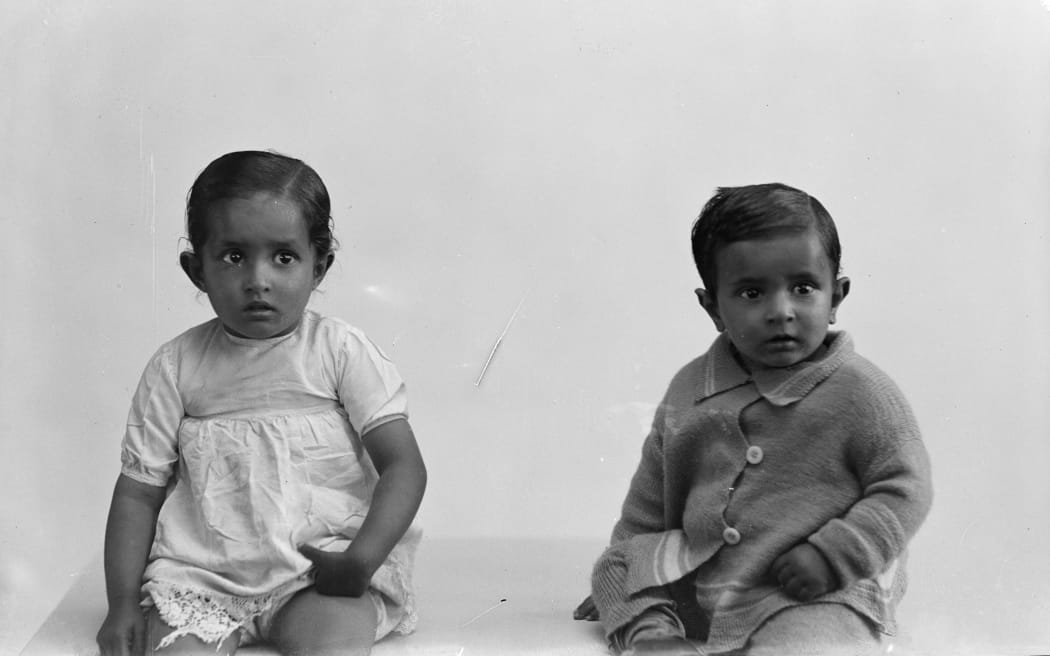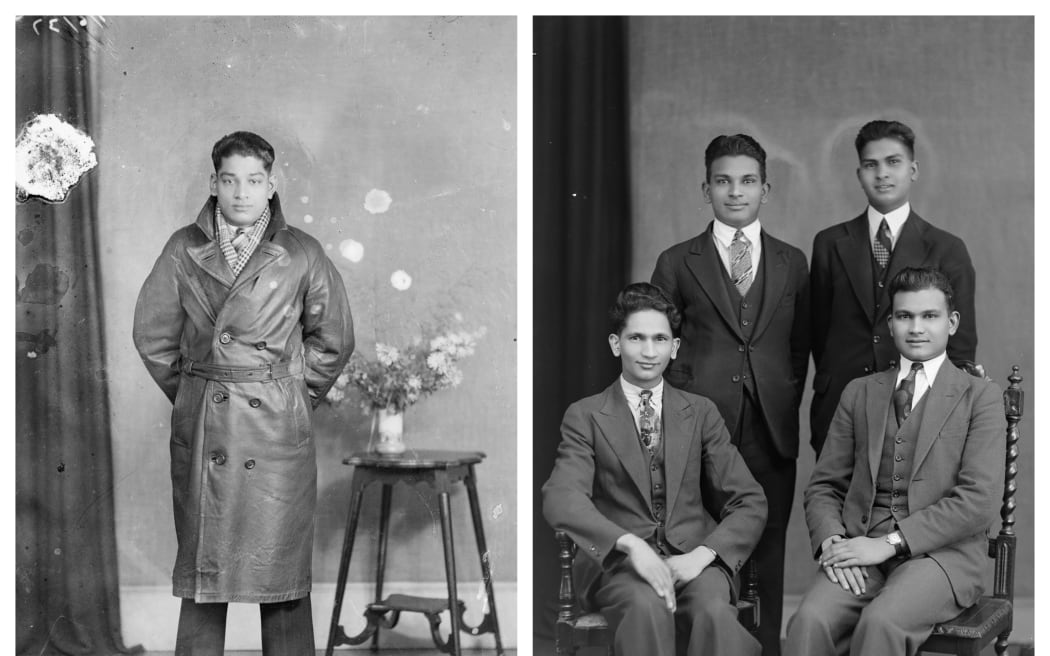
"Two men, circa 1930s, Wellington" Photo: Cuba Photographic Studio. Purchased 1998 with New Zealand Lottery Grants Board funds. Te Papa (B.046866)
A Wellington woman was handed a photograph of an elegantly dressed Indian man wearing a sports blazer in April as part of an attempt to identify dozens of unnamed portraits that had been sitting in the basement of the country's national museum. Much to her surprise, the gentleman turned out to be her father.
Stephanie Gibson, curator of New Zealand histories and culture at Te Papa Museum in Wellington, had sent Lalita Kasanji the portrait, asking her if she knew who he was.

"Vanmali Kasanji wearing Wellington Indian Sports Club blazer, 1939, Wellington" Photo: Cuba Photographic Studio. Purchased 1998 with New Zealand Lottery Grants Board funds. Te Papa (B.047041)
Gibson sent the image to Kasanji because her mother, Ruxmani, has been advising the museum on matters related to the history of Indian New Zealanders since the 1990s.
"I had a suspicion, which was confirmed when my mother looked at the photograph and told me it's my father, Vanmali Kasanji," Kasanji says.
Kasanji's father, who is seen wearing a Wellington Indian Sports Club blazer in the portrait, had died a few decades back.
"Mum remembered dad had an old passport with that image," Kasanji says. "We found the passport and showed it to Stephanie to verify the original portrait. He is in his late 20s in the photograph, which was clicked at the Cuba Photographic Studio in Wellington.
"My grandfather, Kasan Bhula, was one of the first Indian immigrants to New Zealand. He came here in 1912 for the first time," says Kasanji, who wrote a master's thesis documenting early Indian migration to New Zealand. "After several trips back and forth, he finally brought my father with him to Auckland in 1929. The family later moved to the capital."
The portrait of Kasanji's father is one of nearly 4000 negatives that were found in the 1990s in a cupboard at 147 Cuba Street in Wellington. Te Papa acquired the collection in 1998.
The building was occupied by portrait photography studio Berry & Co., which was established in 1897 by William Berry. Cuba Photographic Studio took over the premises in the 1930s.

Left: "Man, circa 1930s, Wellington". Right: "Woman and child, circa 1935, Wellington". Photo: Cuba Photographic Studio. Purchased 1998 with New Zealand Lottery Grants Board funds. Te Papa (B.047041, B.047062)
"Of these, there are 95 portraits of early Indian immigrants taken at the Cuba Photographic Studio in the 1930s and '40s. But there will probably be more in the collection taken at different studios in different time periods," Gibson says.
"After her father's portrait was identified, Lalita suggested enlisting the help of the Wellington Indian Association to see if they could name any of the portraits," Gibson says. "I created the collection link in May - Portraits of the Wellington Indian community - and made hard copy booklets of all the portraits for Lalita to distribute with a questionnaire attached. If people have information, they can feed it back to us so we can update our records."
Gibson says they've made some progress identifying other individuals in the collection.
"We have 10 names, but detailed information is available only for one to date," Gibson says, referencing the portrait of Kasanji's father. "Our intention is to share the portraits on Te Papa's Collections Online and provide biographical information on early Indian immigrants to New Zealand."
On Wednesday, National Party candidate for Panmure-Otahuhu Navtej Singh Randhawa revealed that another of the photographs featured in the exhibition was of his great granddad, Inder Singh Randhawa.
If the past is anything to go by, staff at the museum remain hopeful more identities will be uncovered.

"Two children, circa 1935, Wellington" Photo: Cuba Photographic Studio. Purchased 1998 with New Zealand Lottery Grants Board funds. Te Papa (B.047060)
"We ran a very successful project around the Berry & Co. negatives in conjunction with the First World War centenary," Gibson says. "In 2014, Te Papa Press published Berry Boys: Portraits of First World War Soldiers and Families. We also held a small exhibition of photographs called The Berry Boys: Naming the Kiwi faces of World War I."
"There is also an ongoing project to name the Chinese portraits in the collection titled Family Ties: Portraits of Chinese New Zealanders. It has been successful."
Kasanji, who is a member of Wellington Indian Association's life membership awards committee, feels the quest to identify the portraits represents more than simply putting a name to a face.
"As a community, it would be an incredible achievement to give names to these portraits and, if possible, share their history with our future generations and to add to their genealogy, especially as the Wellington Indian Association approaches its 100th anniversary in 2025," Kasanji says.
"It's a start of a journey to discover the achievements of the pioneers of the Indian community in New Zealand, and how proud they would be reflecting on where they started and how far their children and grandchildren have come."

Left: "Man, 1 June 1937, Wellington". Right: "Four men, circa 1930, Wellington" Photo: Cuba Photographic Studio. Purchased 1998 with New Zealand Lottery Grants Board funds. Te Papa (B.046866, B.047051)

